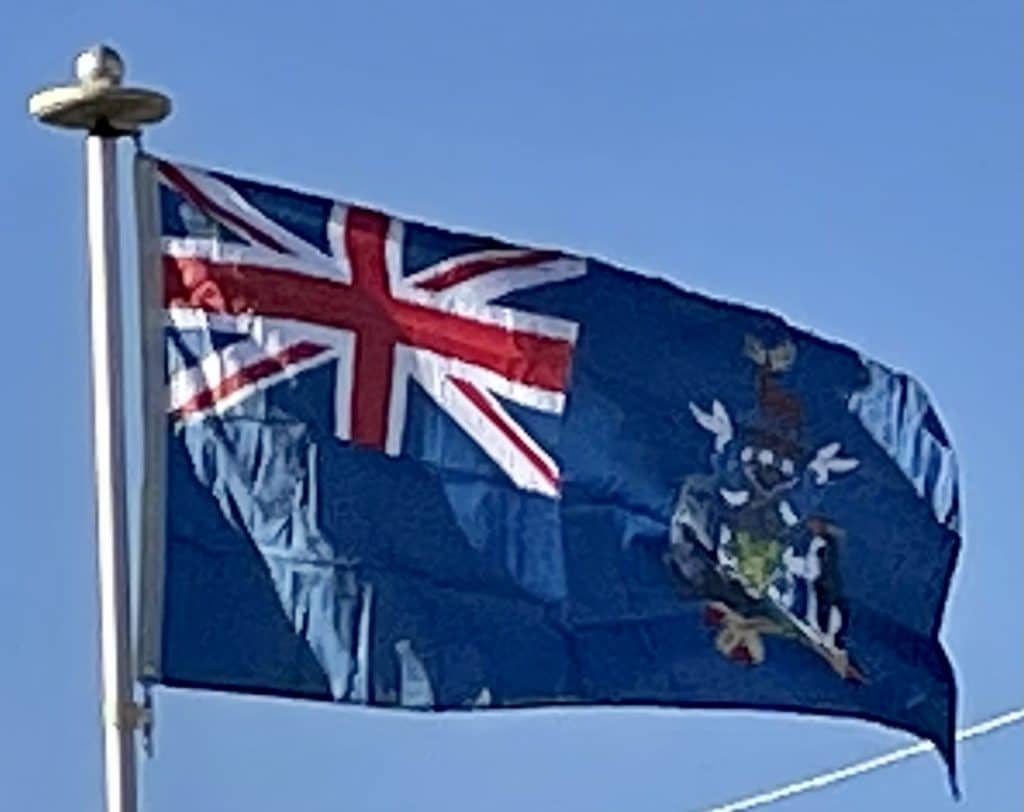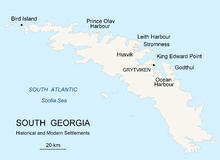

South Georgia and the South Sandwich Islands
With the end of the whaling industry, the stations were abandoned. Apart from a few preserved buildings such as the South Georgia Museum and Norwegian Lutheran Church at Grytviken, only their decaying remains survive. From 1905, the Argentine Meteorological Office cooperated in maintaining a meteorological observatory at Grytviken under the British lease requirements of the whaling station until these changed in 1949.
In 1908, the United Kingdom issued further letters patent that established constitutional arrangements for its possessions in the South Atlantic. The letters covered South Georgia, the South Orkneys, the South Shetlands, the South Sandwich Islands, and Graham Land. The claim was extended in 1917 to include a sector of Antarctica reaching to the South Pole. In 1909, an administrative center and residence were established at King Edward Point on South Georgia, near the whaling station of Grytviken. A permanent local British administration and resident magistrate exercised effective possession, enforcement of British law, and regulation of all economic, scientific, and other activities in the territory, which was then governed as the Falkland Islands Dependencies. In about 1912, what is according to some accounts the largest whale ever caught, a blue whale of 110 feet (34 m), was landed at Grytviken.
In April 1916, Ernest Shackleton‘s Imperial Trans-Antarctic Expedition became stranded on Elephant Island, some 800 miles (1,300 km) southwest of South Georgia. Shackleton and five companions set out in a small boat to summon help, and on 10 May, after an epic voyage, they landed at King Haakon Bay on South Georgia’s south coast. While three stayed at the coast, Shackleton and the two others, Tom Crean and Frank Worsley, went on to cover 22 miles (35 km) over the spine of the mountainous island to reach help at Stromness whaling station. The remaining 22 members of the expedition, who had stayed on Elephant Island, were subsequently rescued. In January 1922, during a later expedition, Shackleton died on board ship while moored in King Edward Cove, South Georgia. He is buried at Grytviken. The ashes of another noted Antarctic explorer, Frank Wild, who had been Shackleton’s second-in-command on the Imperial Trans-Antarctic Expedition, were interred next to Shackleton in 2011.
Argentina claimed South Georgia in 1927. The basis of this claim and of a later claim in 1938 to the South Sandwich Islands has been questioned. During the Second World War, the Royal Navy deployed an armed merchant vessel to patrol South Georgian and Antarctic waters against German raiders, along with two four-inch shore guns (still present) protecting Cumberland Bay and Stromness Bay, which were operated by volunteers from among the Norwegian whalers. The base at King Edward Point was expanded as a research facility in 1949/1950 by the British Antarctic Survey, which until 1962 was called the Falkland Islands Dependencies Survey.
The Falklands War was precipitated on 19 March 1982 when a group of Argentinians (most of them Argentine Marines in mufti), posing as scrap-metal merchants, occupied the abandoned whaling station at Leith Harbour on South Georgia. On 3 April, Argentine troops attacked and occupied Grytviken. Among the commanding officers of the Argentine garrison was Alfredo Astiz, a captain in the Argentine Navy who was convicted years later of crimes against humanity committed during the Dirty War in Argentina. The island was recaptured by British forces on 25 April, in Operation Paraquet.
